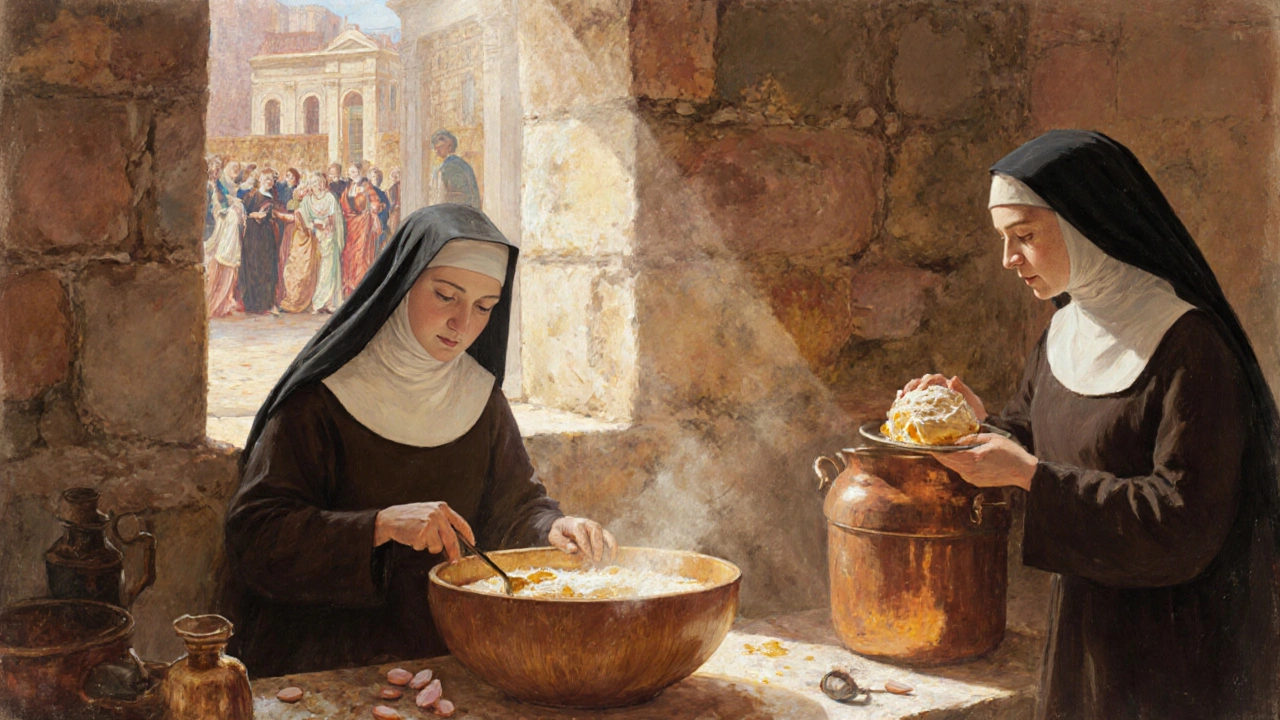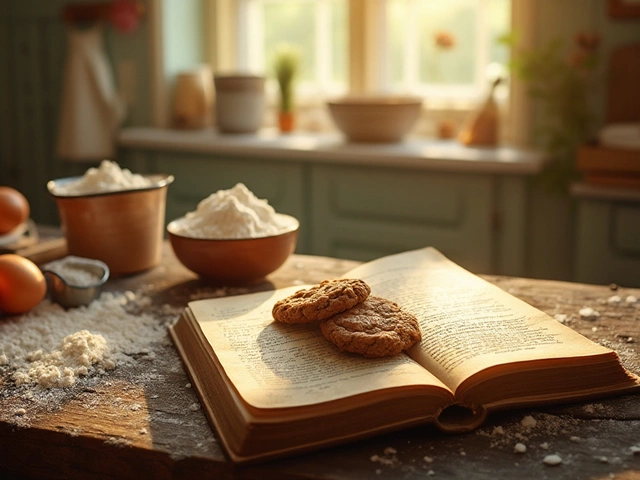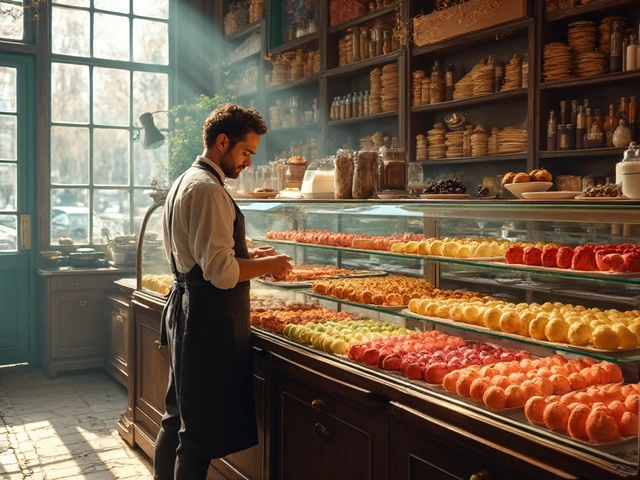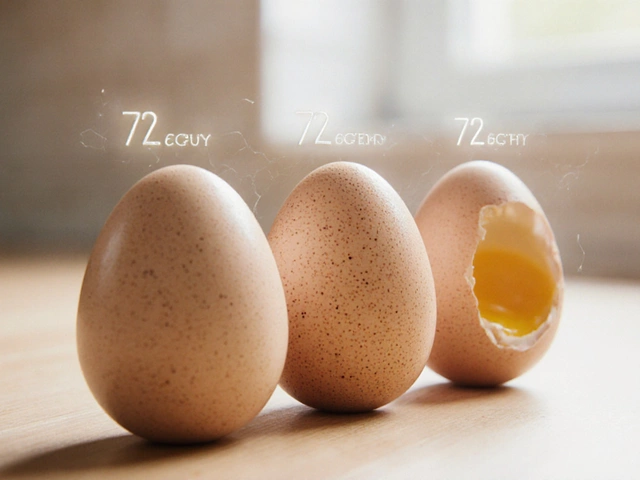Macaron Ingredient Calculator
Ingredients Needed
Enter quantity and select method, then click "Calculate Ingredients"
Key Takeaways
- Macarons are delicate French sandwich cookies made from almond flour, egg whites, and sugar.
- They originated in 16th‑century Italy and became a Parisian specialty in the early 1900s.
- The French and Italian methods differ mainly in the way the meringue is prepared.
- Classic flavors include pistachio, raspberry, chocolate, and vanilla, but modern bakers experiment with everything from matcha to cheese.
- Store macarons in the fridge, let them come to room temperature before eating for the best texture.
What Is a Macaron?
Macarons are a French meringue‑based sandwich cookie featuring two smooth, slightly crisp shells that hug a creamy filling. The name often trips people up because it sounds like the Italian “maccherone,” but the Portuguese word “macarrão” (meaning pasta) is unrelated. In simple terms, a macaron is a bite‑size, airy, slightly chewy treat that balances sweetness with a hint of nutty flavor from its almond base.
Where Did Macarons Come From?
The story begins in Renaissance Italy, where nuns in a monastery near Venice crafted a sweet made from almond paste, egg whites, and honey. When Catherine de Medici married into the French royal family in 1533, she brought the recipe to the French court. Over the centuries the technique morphed, and by the early 1900s two Parisian patisseries-Ladurée and Pierre Hermé-turned the humble cookie into a luxury product, introducing bright colors and innovative fillings.
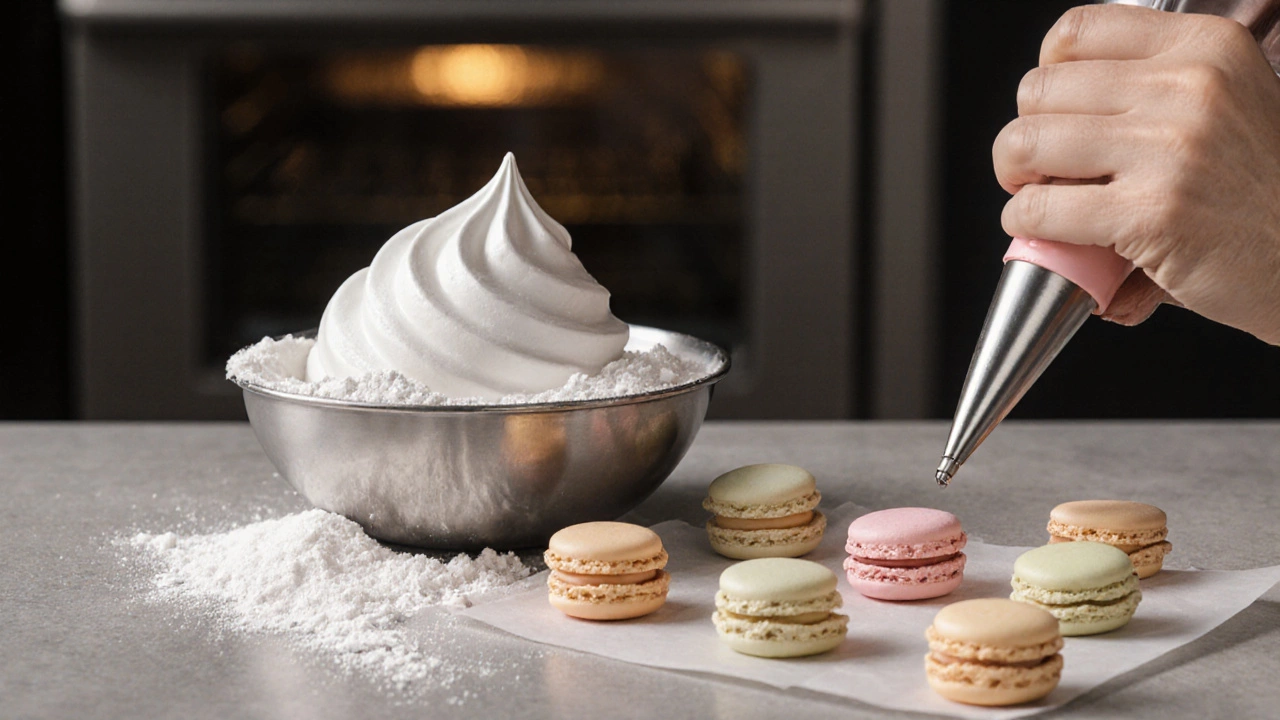
How Are Macarons Made?
The magic starts with a few core ingredients, each of which deserves its own spotlight.
- Almond flour (finely ground blanched almonds) provides the nutty backbone and a delicate crumb.
- Egg whites, usually aged 24-48hours, are whipped into a glossy meringue that gives the shells their lift.
- Powdered sugar blends with the almond flour to keep the batter smooth.
- The meringue can be prepared French‑style (egg whites plus sugar) or Italian‑style (a hot sugar syrup poured into whipped whites). The latter yields a sturdier shell and a shinier finish.
All ingredients are sifted together, gently folded, and piped onto parchment. After a short “rest” (about 20‑30minutes) the shells develop a thin skin-crucial for that signature “feet” (the ruffled base). They bake at a low temperature (around 150°C/300°F) until set but not browned.
Popular Macaron Flavors and Variations
Classic French bakeries stick to timeless flavors: pistachio, raspberry, chocolate, and vanilla. Today, creative chefs push the envelope:
- Matcha‑white chocolate - earthy tea meets sweet cream.
- Salted caramel - a buttery caramel center with a pinch of sea salt.
- Lavender honey - floral notes balanced by gentle honey sweetness.
- Black sesame - a nod to Asian desserts, with a subtly nutty interior.
- Cheese‑and‑herb - a savory twist using goat cheese, chives, and a dash of lemon zest.
When you see a macaron with an unexpected color, it’s often a clue to the filling: bright pink for raspberry, deep green for pistachio, or even violet for lavender.
French vs Italian Macaron
| Aspect | French Method | Italian Method |
|---|---|---|
| Meringue type | Egg whites + granulated sugar (soft meringue) | Egg whites + hot sugar syrup (stiff meringue) |
| Shell texture | Delicate, slightly chewy | More stable, glossy surface |
| Risk of cracking | Higher if batter is over‑mixed | Lower; syrup stabilizes structure |
| Typical use | Traditional French patisseries | Modern bakeries seeking consistency |
Both methods produce delicious cookies, but the Italian technique is favored by many home bakers because it reduces the chance of a flat or cracked shell.
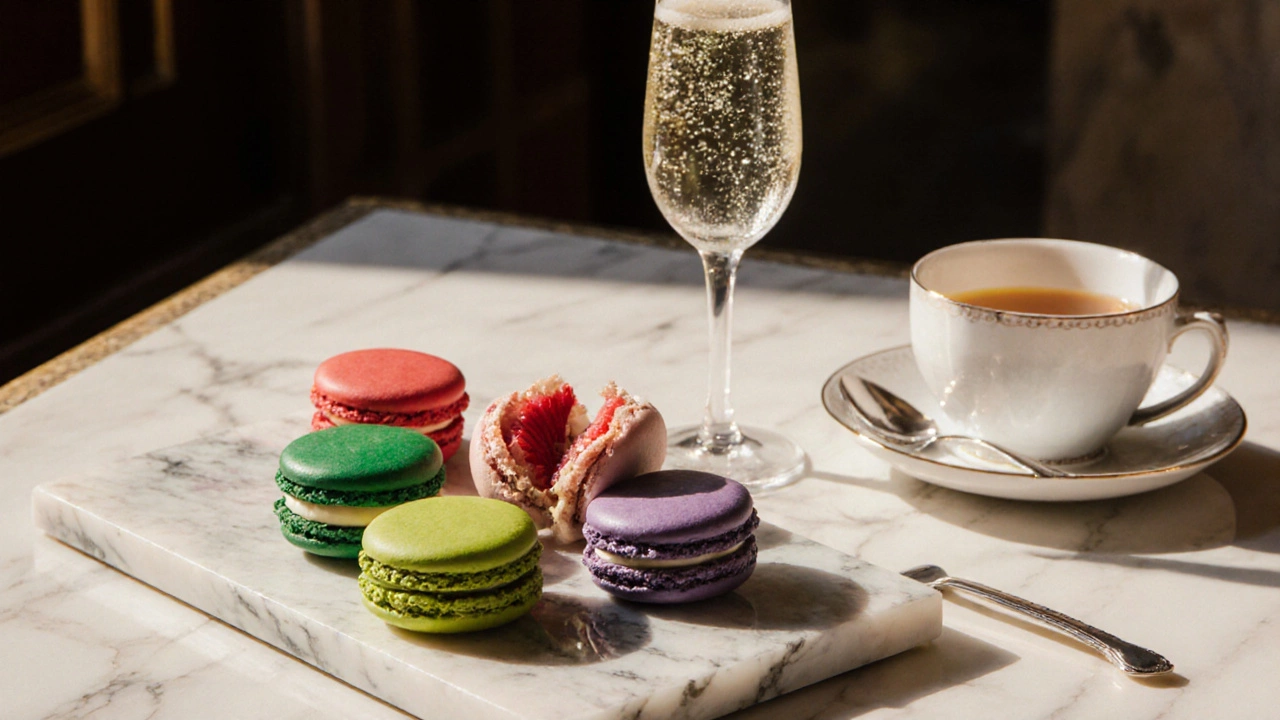
Enjoying Your Macarons
To get the full experience, follow these simple steps:
- Store the cookies in an airtight container in the fridge for up to three days.
- Before serving, let them sit at room temperature for 20‑30minutes. This restores the airy interior.
- Pair them with a glass of sparkling wine, tea, or coffee-whatever complements the filling.
Remember, a macaron isn’t a cake; it’s a sandwich. The shell should crack gently when you bite, revealing a smooth, flavorful center that doesn’t overwhelm the almond base.
Myths About Macarons
- They’re always expensive. While premium brands charge for branding, a basic batch of 24 macrons can be made at home for under $15.
- Macarons are just fancy cookies. Their unique structure-two meringue shells with a true “feet” rim-sets them apart from regular cookies.
- Only French bakers can make them. Mastering the technique is about precision, not geography. Many non‑French chefs now excel at the craft.
Understanding the process demystifies the pastry and empowers you to experiment.
Frequently Asked Questions
What is the macarons meaning in culinary terms?
In simple words, a macaron is a light, almond‑flavored sandwich cookie made from a meringue base and filled with buttercream, ganache, or jam.
Are French and Italian macarons the same?
They share the same ingredients but differ in the meringue preparation. The Italian method uses a hot sugar syrup, resulting in a sturdier shell.
Can I make macarons without an oven?
Traditional macarons need dry heat to set the shells, so an oven (or a convection toaster oven) is essential. Some experimental recipes use a dehydrator, but texture will differ.
How long can I keep homemade macarons?
Stored in the fridge, they stay fresh for 3‑4 days. For longer storage, freeze them in a single layer, then transfer to a zip bag; they’ll keep for up to a month.
Why do some macarons crack on top?
Cracking usually means the batter was over‑mixed (the “macaronage” stage) or the shells didn’t rest long enough before baking. Adjust mixing time and let the shells dry on the tray for a few minutes.

